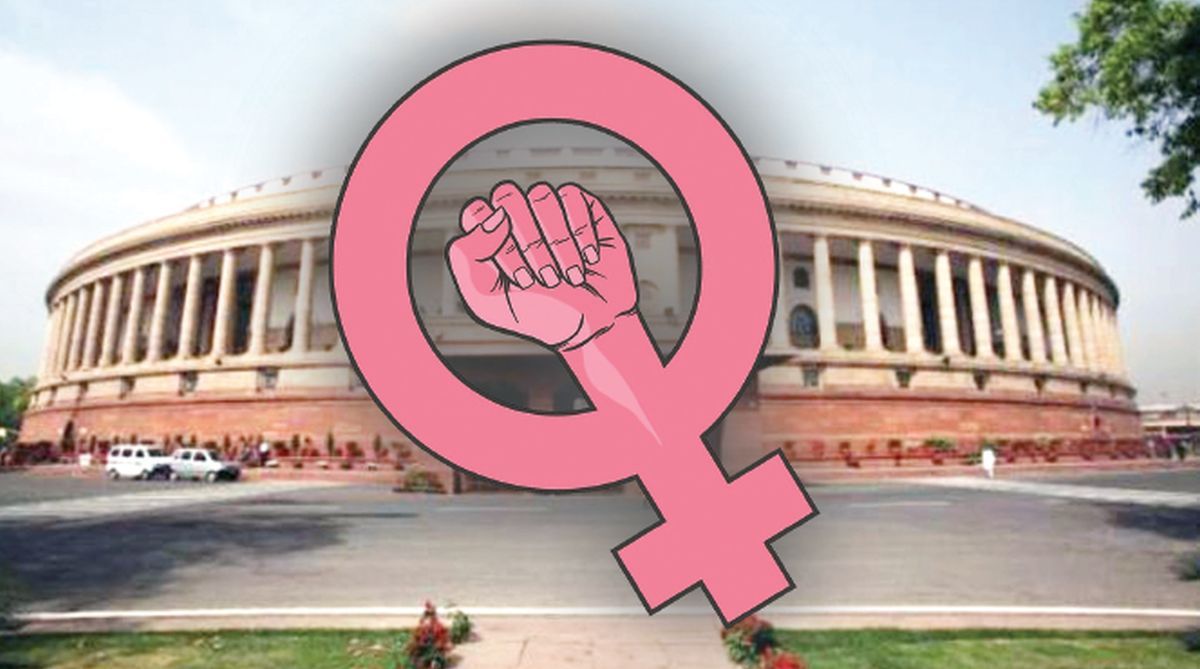Protagonists of women rights argue that women’s participation in politics is a reinforcing factor in ushering in a level playing field for them. Now, how inclusive is India’s political domain?
Sadly, India stands at the lower rung of the Inter-Parliamentary Union (IPU) 2018 rankings at 152 among 193 countries in women’s representation in parliaments. A small island nation like Malta, with a population of only 4.6 lakhs, precedes India. Even neighbouring countries like Afghanistan, Bangladesh, Pakistan, China and Iraq stole a march over India.
Advertisement
The Election Commission of India (ECI) while analysing the outcome of the last fifteen Lok Sabha elections, expressed concern about the fact that women despite constituting 49 per cent of the total electorates, could only share a single seat among ten in the parliament. Their success rate in the elections was also found to be better during the period. In the current Lok Sabha, the success rate for men was 6.4 per cent, while that for women was 9.3 per cent. The number of women contestants witnessed a 15-fold increase in comparison to only 5-fold increase among male contestants. The trend perhaps indicates women’s growing inclination to enter the political fray.
Way back in 2008, PRS legislative research, on the eve of the introduction of the constitutional 108th Amendment Bill, which proposed to reserve 33 per cent of seats for women in the Lok Sabha, and in the legislative assemblies, found that there were only 280 women out of the total 4,120 MLAs in the twenty-eight States and two Union Territories. It was less than 7 per cent of all MLAs, and even lesser than 9.5 per cent of women’s representation in the then Lok Sabha.
West Bengal had the highest of nearly 13 per cent, while among the southern States, Tamil Nadu topped the list with 9.4 per cent of women MLAs, followed by Andhra with 8.8 per cent. Surprisingly, Kerala, with its more than 90 per cent literacy rate at that time, had only about 5 per cent representation, and Karnataka was as low as 1.3 per cent.
In the Hindi belt, Haryana had a better representation of 12.2 per cent women MLAs. Some of the NE states like Arunachal Pradesh, Mizoram, Nagaland, Manipur and also Puducherry did not have a single woman MLA. It is an irony that the women’s reservation bill is still languishing in political cold storage.
Now, what is the contemporary political scene? An IndiaSpend analysis revealed that there are just 62 women among the 678 members of legislative assembly (MLAs) elected in the 2018 state elections in the five states of Rajasthan, Madhya Pradesh (MP), Chhattisgarh, Telangana and Mizoram. They are home to 93 million women, but have only 9 per cent MLAs as women, down from 11 per cent from the previous assembly elections. Only Chhattisgarh witnessed an increase in the proportion of female MLAs. Mizoram continues to have zero female representation in the assembly.
In Karnataka, among the 222 successful candidates, only seven were women, one more than in the previous election in 2013. Tripura in spite of having better sex ratio and higher level of education among women, had only 24 women among 297 contestants, and only three of them were winners among the 59 winning candidates, which is just 5.02 per cent of the total strength.
In Chattisgarh, the number of women contestants was 131 which is about 10 per cent of the 1,269 contesting candidates, and out of them, only 13 were successful. The success rate of women candidates was 9.92 per cent, while that of men was 6.77 per cent. In Madhya Pradesh, out of total 2,899 contestants, women comprised 250, about 8.62 per cent of the total contestants, the highest number among the five states. The number of women winners was twenty-one, and their success rate was 9.13 per cent, higher than men which was 7.89 per cent.
In Rajasthan, 187 women fought elections, about 8.22 per cent of the total number of 2274 contestants. Twenty-two women won elections with a success rate of 11.76 per cent, while it was 8.53 per cent for men. Mizoram electoral battles remained a story of defeat for women in the polls. All 15 women contestants, out of a total of 209 in the fray, failed to win a single seat, even though there were more women voters than men. The Mizo National Front (MNF), which bagged 26 seats in the 40-member House, did not field a single woman candidate. All women contestants, either as independents or from recognised political parties, lost elections during the last six assembly polls between 1989 and 2013.
In the organisational hierarchy of major political parties, women continue to remain less visible. The Congress party has only one woman among the 12 AICC general secretaries, and five among the 44 secretaries. In the BJP, among the seven vice-presidents, there is only one woman and also one woman as a general secretary among the seven.
The 2017-18 Indian Economic Survey attributed one among the many factors responsible for low representation of women in Indian politics as the persisting confidence deficit in mainline political parties about women as potential winners and their ability in garnering financial support to run electoral campaigns.
But there is a ray of hope too. Women now comprise about 44.2 per cent of total elected representatives in the Panchayati Raj Institutions, and 43 per cent are Sarpanches in Gram Panchayats. A research study commented that women have been found ‘not only capable of winning elections but also getting re-elected.’, Thanks to the 73rd constitutional amendment!
Power sharing in the higher echelons of the polity still remains a far-off dream for women in India. The writer is a former Indian Information Service Officer, and media educationist.











